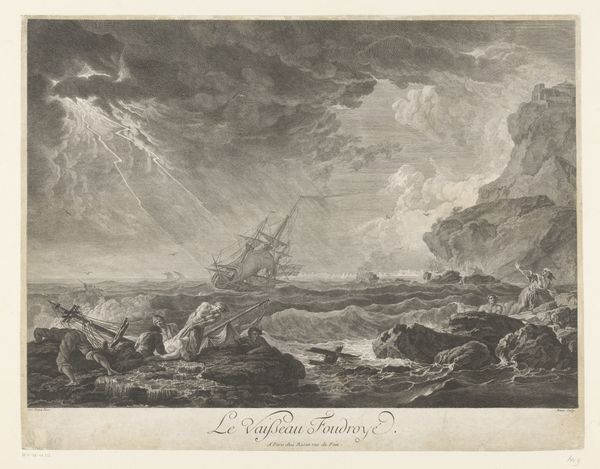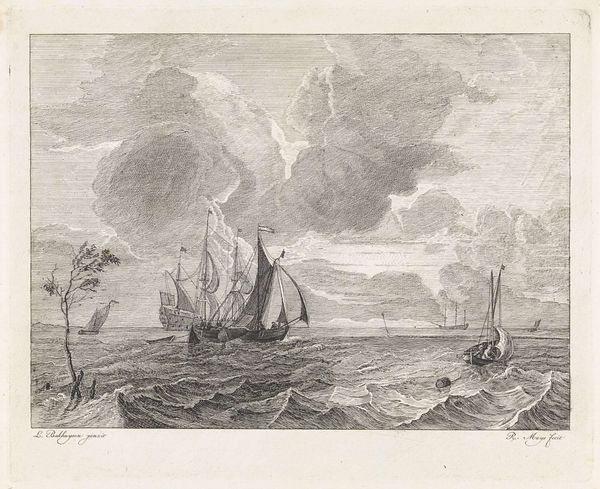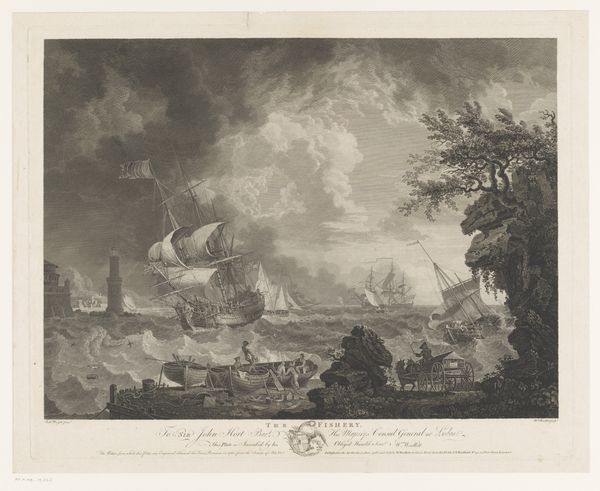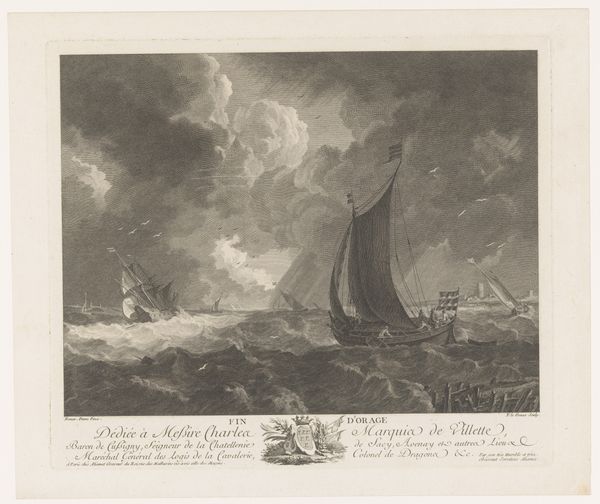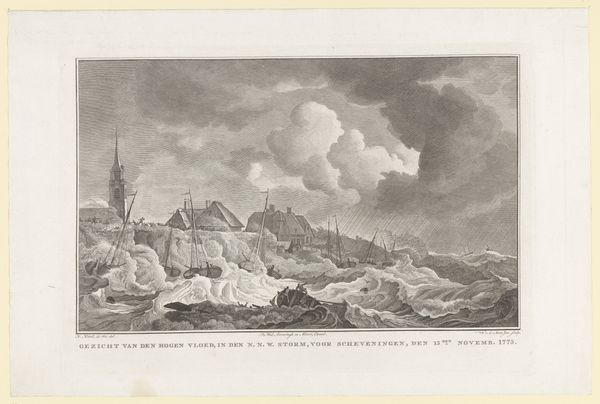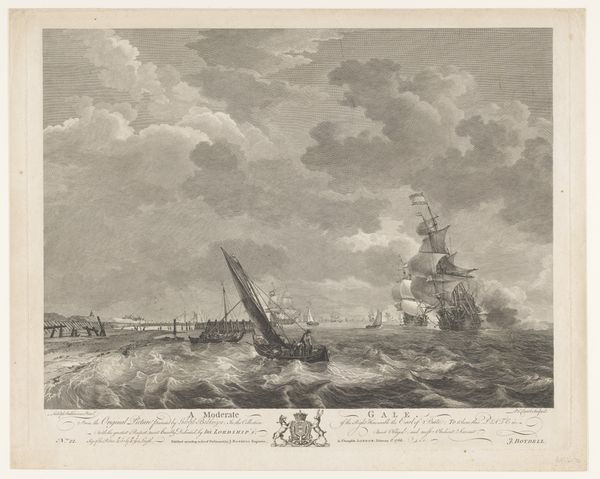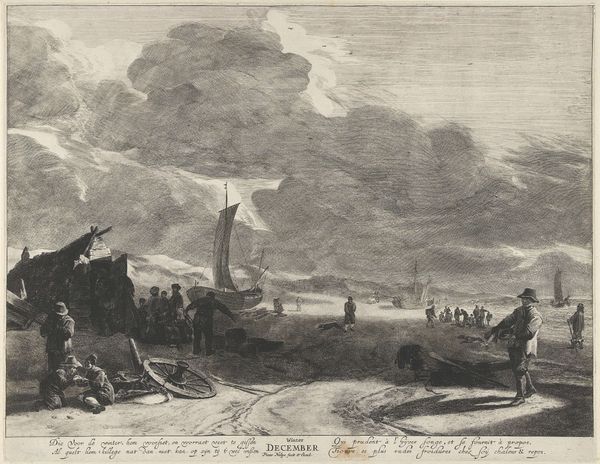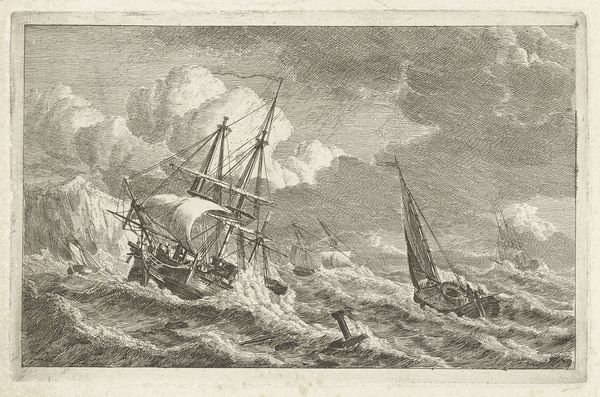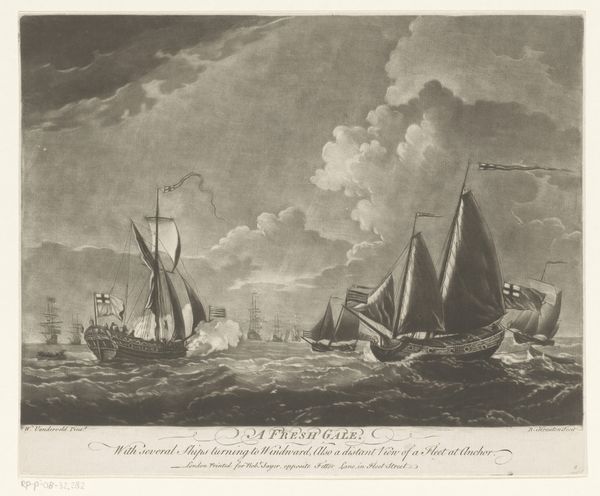
print, engraving
#
baroque
# print
#
landscape
#
line
#
cityscape
#
history-painting
#
engraving
Dimensions: height 392 mm, width 505 mm
Copyright: Rijks Museum: Open Domain
Editor: This engraving, "Zeegezicht met schipbreuk bij storm," from the late 18th century, credited to Jacques Philippe Le Bas, captures quite a tumultuous scene. I’m struck by the incredible detail achieved with just line work – you can almost feel the spray of the waves. How does its depiction of labour and destruction inform our understanding of the work? Curator: Exactly. Considering the work's materiality—an engraving, a reproducible medium—and its era, what does the widespread distribution of such images imply about 18th-century society's relationship with maritime events and disasters? The labor invested in creating this print – the engraver’s skill and the printing process itself – highlights the commodification of tragedy. Editor: That’s interesting. I hadn't thought about it in terms of consumption. Do you see any commentary on class structure embedded in this image? Curator: Absolutely. Observe the wrecked ships. Who owned them? Who profited from their voyages? This "history-painting," disguised as landscape, presents not only a dramatic scene, but alludes to risks assumed (or forced upon) people within naval capitalism. Who manned those ships? The image makes no depiction of wealth distribution, but the chaos of it invites questions about ownership. Editor: So you are suggesting that by documenting shipwrecks, Le Bas unintentionally calls into question power structures of the time? Curator: In part. The act of creating and disseminating such imagery reflects a culture grappling with maritime expansion, trade, and their inherent risks and repercussions. Consider, for instance, how technological advancements in shipbuilding were rapidly accelerating at this point; a print such as this presents a moment where that drive forward meets forces beyond control. This is less a celebration of seafaring, but a memorialization of labor and consumption bound in a shared fate. Editor: It’s made me rethink what I’m seeing. It's more than just a dramatic shipwreck; it’s a reflection on the materials, labor, and social consequences tied to maritime activities. Curator: Precisely. Examining art through the lens of production reveals a wealth of contextual meaning beyond surface aesthetics.
Comments
No comments
Be the first to comment and join the conversation on the ultimate creative platform.
